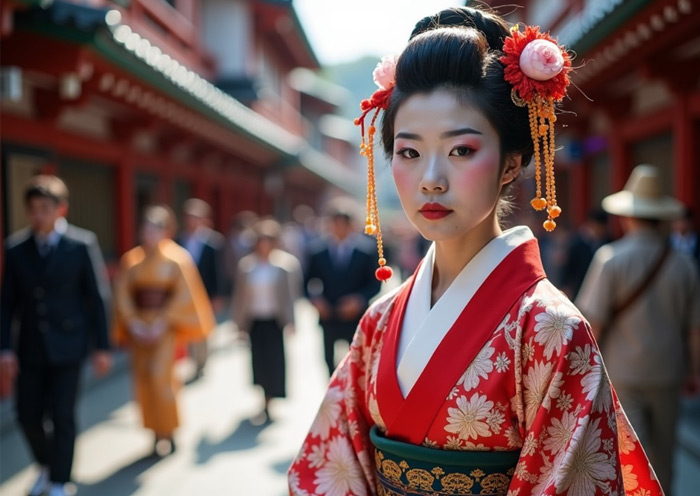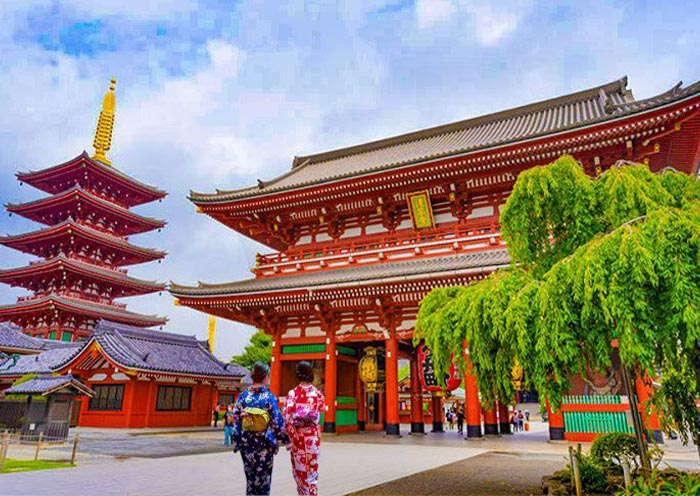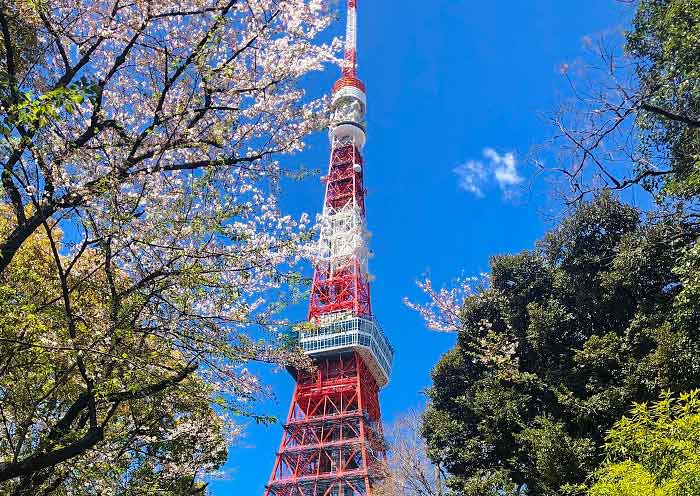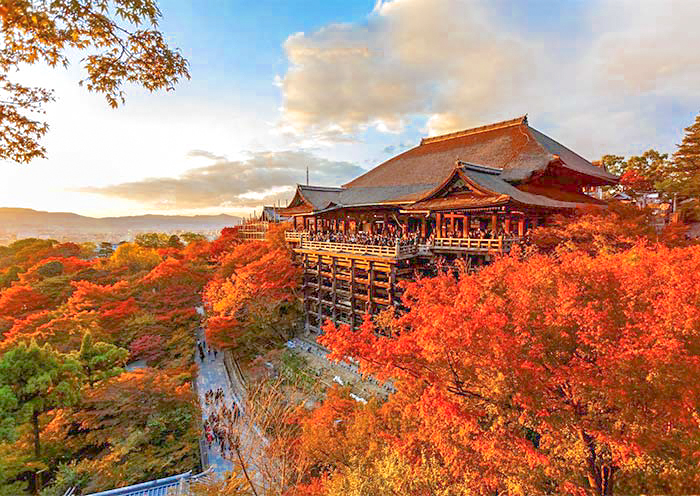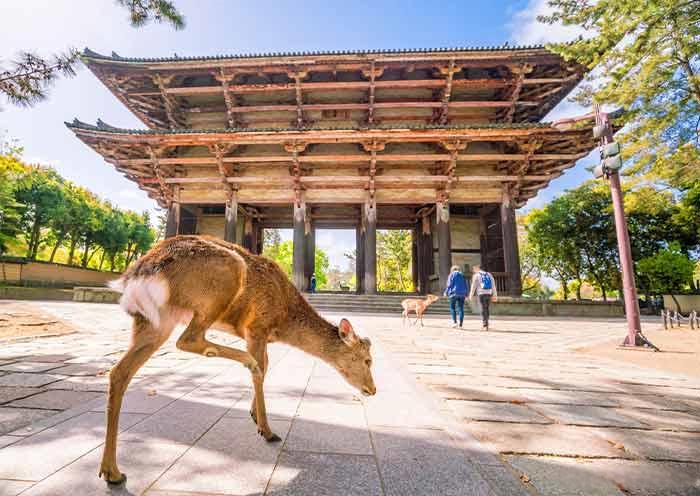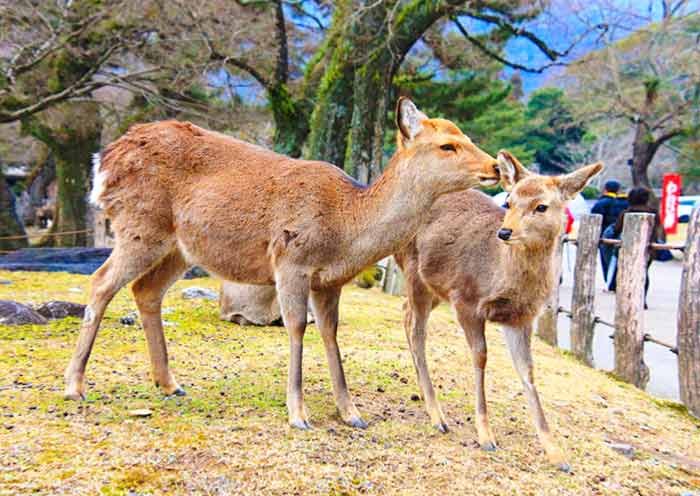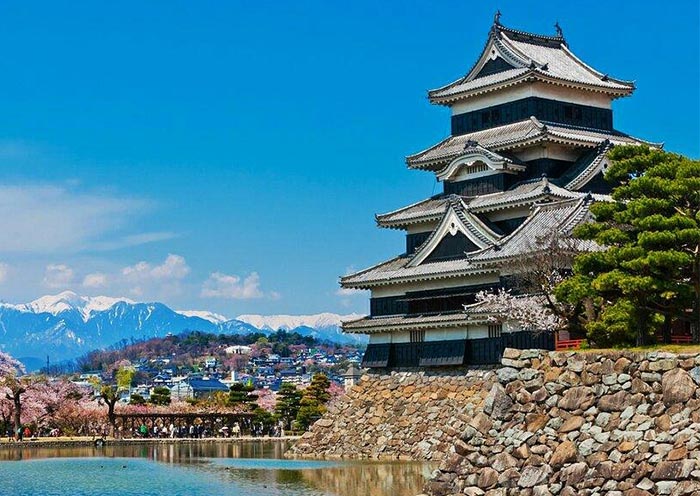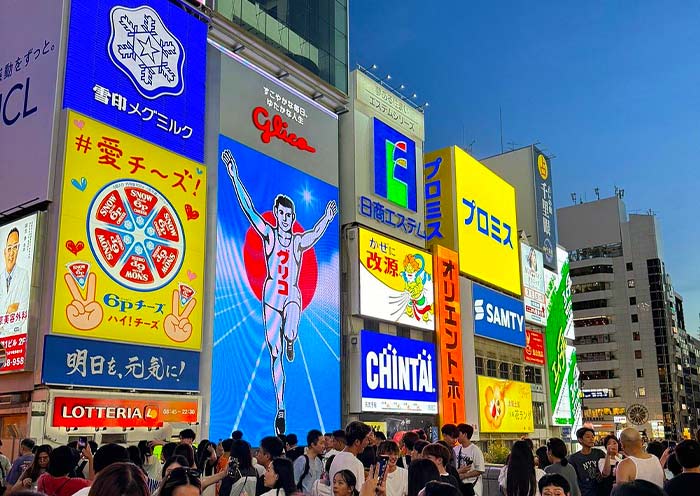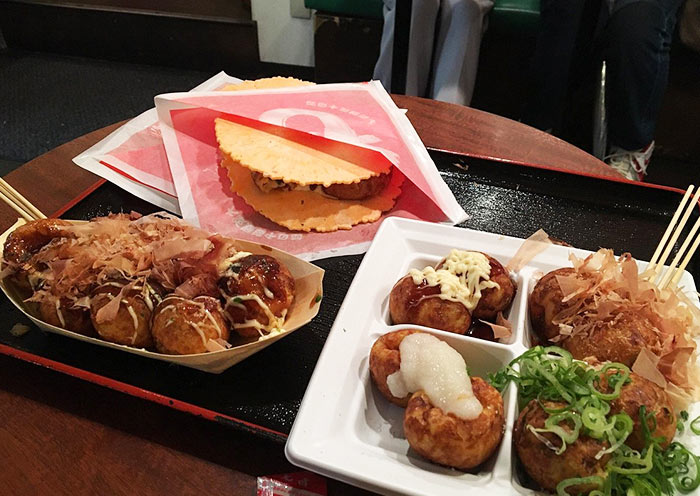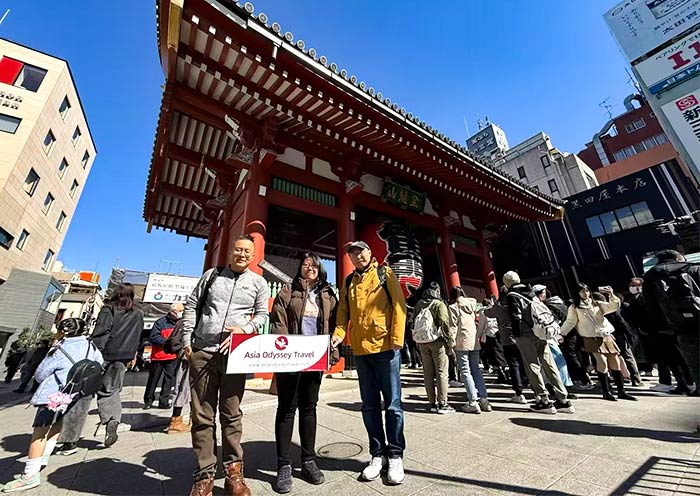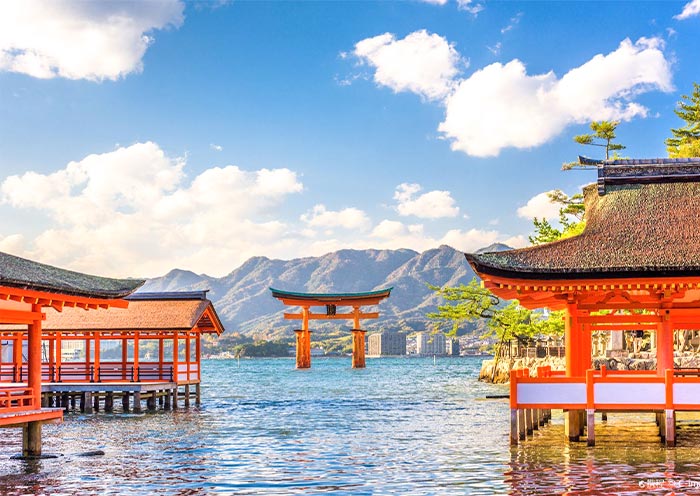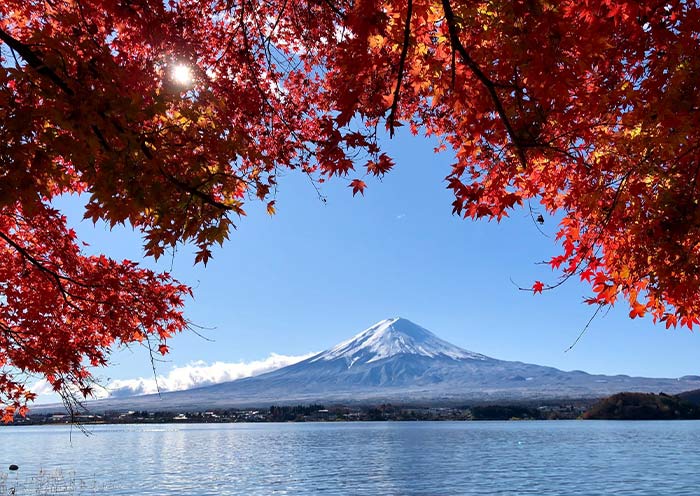7 Days Japan Golden Route Tour in Small Group
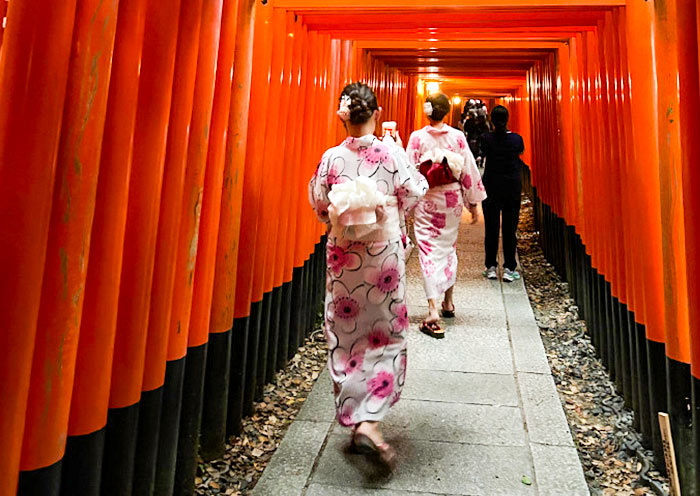
-
Tour Code: AOT-JPN-B
-
Travel Route: Tokyo - Mount Fuji - Kyoto - Nara - Osaka
-
Features: Temples, Shrines, World Heritage, Modern Cityscape, Cultural Experience, Japanese Cuisine, Natural Scenery, Market & Local Life, Park, Shopping, Nightlife
-
Tour Type: Small Group of maximum 16 travelers, guaranteed departures;
-
Guide & Driver: English-speaking guide, experienced driver with an air-conditioned coach
-
Accommodation: 6 Nights at 4-Star Standard Hotel
- Itinerary
- Dates & Price
- Accommodation
- Trip Notes
- Reviews
If you're looking for the most classic way to explore Japan and visit its most iconic destinations, join our 7-Day Japan Golden Route tour in a small group! Enjoy a classic itinerary at a comfortable pace, fully immersing yourself in the country's rich history and culture - all at an affordable price with Asia Odyssey Travel!
Discover the vibrant city of Tokyo, where ancient temples coexist with modern skyscrapers. Marvel at the majestic Mount Fuji, a UNESCO World Heritage Site, and explore the serene beauty of Lake Kawaguchi. Journey back in time to Kyoto, the former imperial capital, and admire its historic temples and shrines. Continue your exploration in Nara, home to ancient temples and playful deer, before concluding your trip in Osaka, renowned for its delicious food and lively atmosphere.
This group tour includes 6 nights of 4-star accommodations, expert guidance, and all necessary transportation, ensuring an enjoyable experience. Choose your schedule and explore the Golden Route with us!
Itinerary at a Glance
Tokyo (2 Days)
Meiji Jingu Shrine, Shibuya Crossing, Senso-ji Temple, Overlook Tokyo Skytree Tower, Tsukiji Fish Market
Mount Fuji (1 Day)
Arakurayama Sengen Park, Lake Kawaguchi (with Cruise)
Kyoto (2 Days)
Tokyo to Kyoto by Shinkansen (Bullet Train), Kinkakuji Temple, Nijo Castle, Fushimi Inari Taisha Shrine, Kiyomizudera Temple, Ninenzaka & Sannenzaka, Yasaka Shrine, Gion
Nara (0.5 Day)
Todaiji Temple, Nara Park, Kasuga Taisha
Osaka (1.5 Days)
Osaka Castle Park, Shinsaibashi-suji Shopping Street
Itinerary Day by Day
Konnichiwa (こんにちは)!Welcome to Tokyo, the capital city of Japan!
On this day, based on your flight schedule, you will arrive in Tokyo by plane. Upon arriving at the airport, you will transfer to the designated hotel in Tokyo on your own. The accommodation in Tokyo will be a 4-star hotel in a convenient location.
Tokyo, the capital of Japan, is one of Japan and Asia's largest economic centers. Tokyo is a hub for Japanese culture and art, with numerous museums, art galleries, theaters, and cultural venues, serving as a vital platform for artistic activities and cultural exchanges. Tokyo stands as a significant base for technological advancement, nurturing numerous high-tech companies and innovative talents, holding leading positions globally in areas like electronics, automotive, and robotics technology.
Situated at the southern end of the Kanto Plain, Tokyo is surrounded by diverse natural landscapes including Mount Fuji, providing residents with leisure and outdoor activity spaces. At one point, the population of the Tokyo metropolitan area reached 36 million, accounting for one-third of Japan's total population. Despite the high cost of living, Tokyo provides residents with convenient living conditions, offering a plethora of shopping centers, entertainment facilities, and a rich culinary culture ranging from fine dining to street food.
Arrival Ideas:
- Japan has two commonly used international airports. Narita International Airport, located 63.5 kilometers from the center of Tokyo, is the primary international air hub for Tokyo, where flights from China to Tokyo usually land. Tokyo International Airport (Haneda Airport), is situated 17 kilometers from the center of Tokyo and mainly serves domestic flights within Japan and some international flights, including flights to South Korea and other East Asian regions.
- Cities that have direct flights to Tokyoinclude, but are not limited to: Beijing, Shanghai, Guangzhou, Shenzhen, Hangzhou, Xi'an, Chengdu, Chongqing, Hong Kong, Taipei, Kaohsiung, Seoul, Singapore, Bangkok, Kuala Lumpur, Jakarta, Bali, Manila, Ho Chi Minh City, Hanoi, and more. Please note that flight information is subject to changes based on time and market demand. Contact us to obtain the latest flight information and prices.
- In Japan, using public transportation such as the subway & JR trains is recommended to save costs, avoid traffic congestion, and help reduce carbon emissions. Taxi fares in Japan are relatively high, with a starting fare of around 660 Japanese yen and 140 yen per kilometer. Waiting time is also charged. Surcharges are applicable during nighttime and peak hours (+20%), and expressway tolls are additional. Extra fees are levied for large luggage. For instance, a taxi ride from Tokyo Tower to Narita Airport, covering about 60-70 km, might cost around 25,000-35,000 Japanese yen (roughly 170-237 USD).
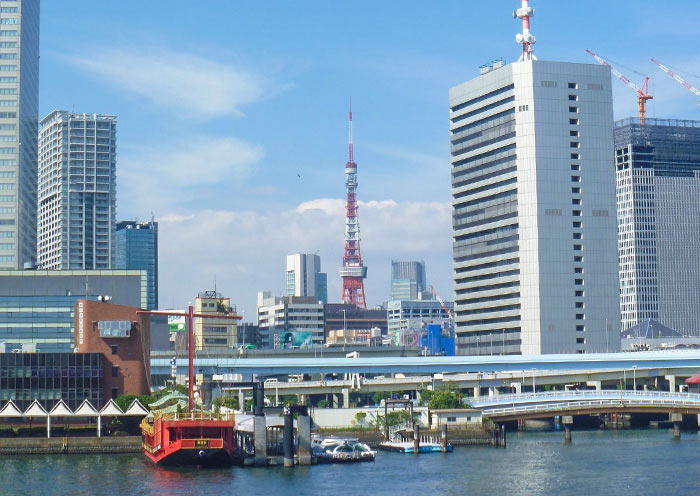
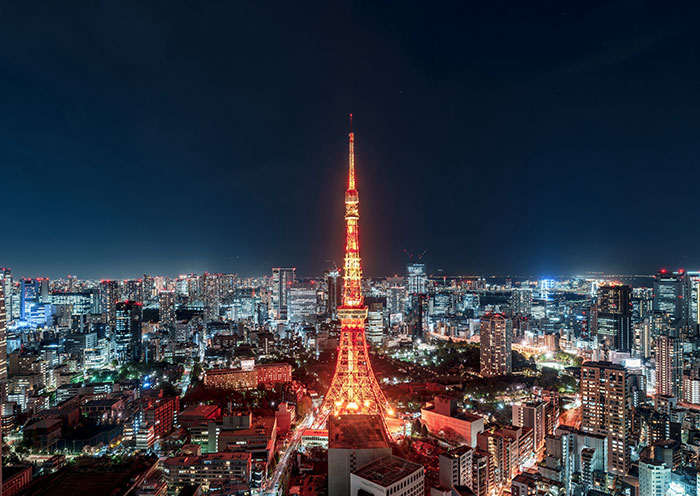
Attractions
/
Transportation
/
Dining
None
Accommodation
4-star hotel in Tokyo
Today, it will be a full-day round trip to admire the breathtaking views of Mount Fuji from Lake Kawaguchi,
Mount Fuji is the tallest mountain in Japan. It's a famous volcano with a perfectly symmetrical cone shape. Visiting Mount Fuji is essential for any traveler in Japan. As a UNESCO World Heritage Site, Mount Fuji (3,776m) stands as an iconic symbol of Japan, a cultural and spiritual landmark (recognized as a holy mountain in Shintoism), and a natural marvel. When picturing Mount Fuji, its distinctive perfect cone shape and snow-capped peak likely come to mind. Among the most renowned depictions is Katsushika Hokusai's 'Thirty-Six Views of Mount Fuji'. Hokusai, one of the "Three Greats of Ukiyo-e", is best known for his masterpiece "The Great Wave off Kanagawa" which can be seen on the 1,000 Japanese yen bill.
Begin your journey at the renowned Arakurayama Sengen Park, where you can admire the magnificent view of a five-story pagoda set against a backdrop of majestic mountains. Hike about 15-20 minutes up to Arakurayama Sengen Shrine, dedicated to the mountain god. The shrine is surrounded by beautiful gardens and offers a peaceful atmosphere. Enjoy the gorgeous scenery and capture iconic photos at the famous Red Fuji Observation Deck.
Next, head to Lake Kawaguchi, another excellent location to leisurely view Mount Fuji. The lake boasts crystal-clear waters, providing breathtaking views of the iconic mountain and a serene atmosphere. Enjoy a cruise on the tranquil waters to marvel at the stunning reflection of Mt. Fuji in Lake Kawaguchi. Additionally, take a leisurely stroll around the lake and explore the nearby parks, galleries, and museums based on your interests.
After that, head back to Tokyo overnight and have a good rest.
Notes:
It is a long day trip, and there will be a surcharge if the tour exceeds 8 hours (For Guide, driver & vehicle).
If the weather is clear, you can enjoy a good view of Mt. Fuji. However, if the weather is not favorable, Mt. Fuji may not be visible.
The best time to view Mount Fuji is generally from December to February when skies are clearer and the peak is snow-capped. And also, April to May (for blooming cherry blossoms) and October to November (for the autumn foliage) are good times.
Early mornings often provide the best visibility before clouds obscure the view. Different locations around Mount Fuji offer varying perspectives, with some spots known for their clear views.
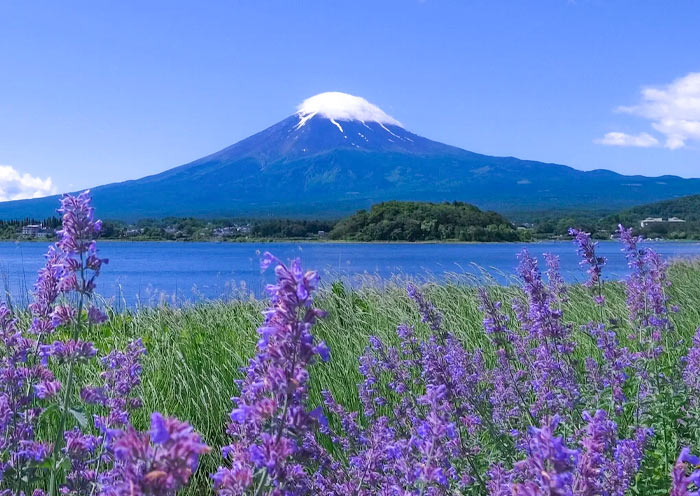
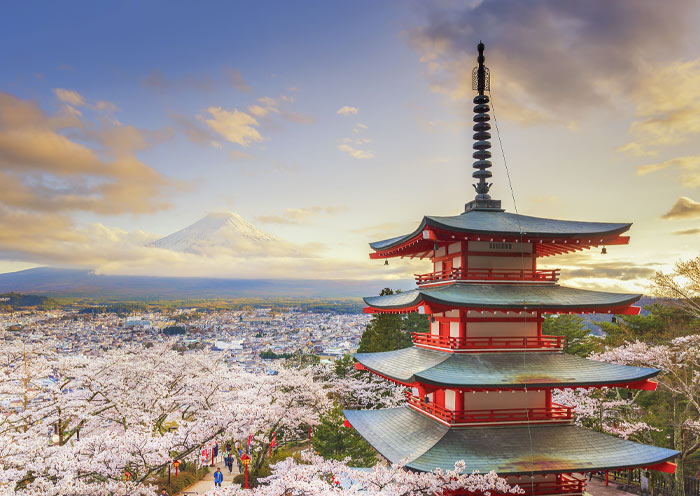
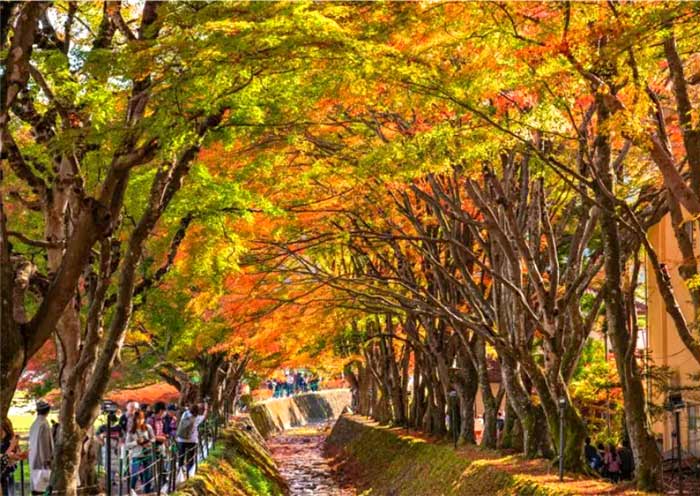
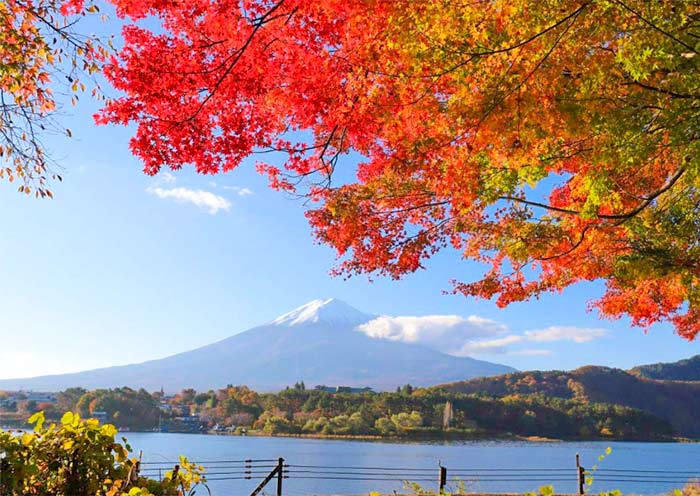
Attractions
2 Sites
Transportation
Vehicle
Dining
Breakfast
Accommodation
4-star hotel in Tokyo
After breakfast, your guide and driver will pick up your group at your hotel. Start an amazing day exploring Tokyo in a small group!
First to visit Meiji Jingu Shrine (Meiji Shrine), a Shinto Shrine dedicated to Emperor Meiji (1852-1912) and Empress Shoken (1849-1914), who played a crucial role in modernizing Japan while excelled in writing Waka (traditional Japanese poems of 31 syllables in the pattern 5-7-5-7-7). Meiji Shrine is also a popular venue for traditional weddings, where you will have the opportunity to witness a Japanese wedding procession and experience the charm of Japanese traditional culture.
The Meiji Shrine is nestled within a tranquil forest that covers an area of 70 hectares, providing a peaceful escape from the bustling city. This forest is home to over 100,000 trees that were donated from regions across Japan during the shrine's construction, in honor of their beloved Emperor Meiji (who established Shinto as the state religion) and Empress Shoken.
Take a stroll along the paths and enjoy the fresh air and natural beauty. You will walk through Japan's largest wooden Torii gate, standing in its natural wooden hue and weighing up to 13 tons. The Torii gate serves as the Symbol of Shinto Shrines, marking the transition from the worldly to the sacred. Then, you will notice the impressive Sake Barrel Wall along the South Approach, which features offerings from sake breweries and believers across Japan, including barrels of sake and Western liquor, reflecting Emperor Meiji's fondness for Western culture.
At the main hall of Meiji Shrine, you can witness locals washing their hands and rinsing their mouths at Purification Font before worship as a sign of respect. You can offer a 5-yen coin (symbolizing a connection) like locals and pray for blessings. In the eyes of the Japanese, Meiji Shrine is considered to have such boundless capabilities, from naming ceremonies for newborns, to coming-of-age ceremonies, graduation ceremonies, seeking marriage partners, praying for world peace, family well-being, safe travels, good health, warding off calamity, etc.
In addition to immersing yourself in Japanese Shinto traditions and architecture, revel in the enchanting surroundings filled with lush trees, serene ponds, graceful bridges, and stone pathways that epitomize the essence of traditional Japanese garden art. You should visit here to enjoy the vibrant bloom of cherry blossoms in spring, the verdant beauty of summer, the fiery hues of autumn leaves, and the serene snowy landscapes of winter.
Tips for Visiting Meiji Jingu Shrine:
- Wear modest clothing: Respect the sacred nature of the shrine by dressing appropriately.
- Be mindful of noise levels: Maintain a quiet and respectful atmosphere.
- Inner Garden (Optional; self-pay; once Imperial Property), and Meiji Jingu Museum (Optional; self-pay; items used by the imperial couple).
Then, move to visit Shibuya Crossing, one of the busiest intersections in the world, accommodating approximately 3,000 people per minute. As one of Tokyo's iconic locations, Shibuya attracts tourists and photographers from around the globe who come to observe and capture its essence. Numerous movies, TV shows, commercials, and music videos are filmed at this location, such as "The Fast and the Furious: Tokyo Drift."
Additionally, if you're interested in the story of Hachiko, the loyal dog, you can also visit his bronze statue. This Hachiko statue is located outside Shibuya Station and was erected to commemorate Hachiko's loyalty. Not only is it a popular meeting spot, but it's also a must-visit attraction for tourists. The statue symbolizes the power of loyalty and love, serving as a touching tribute.
In the afternoon, head to Senso-ji Temple (Asakusa Kannon Temple), a must-visit for anyone traveling to Tokyo. Senso-ji Temple (Asakusa Kannon Temple), is one of the oldest and most famous Buddhist temples in Tokyo, located in the Asakusa district of Taito, Tokyo. The temple is dedicated to Kannon Bosatsu (Avalokiteshvara), the Bodhisattva of compassion. According to legend, in 628 AD, two fishermen retrieved a statue of Kannon from the Sumida River and decided to construct a temple to enshrine it. Completed in 645 AD, Senso-ji has since become a spiritual symbol of Tokyo.
The temple's entrance is marked by the iconic Kaminarimon (Thunder Gate), featuring a massive red lantern and protective deity statues that symbolize the temple's guardians against evil spirits. This gate is a popular photo spot and marks the beginning of Nakamise Street, a lively shopping street lined with stalls offering traditional Japanese snacks, crafts, and souvenirs, which leads up to the temple's second gate, the Hozomon.
Beyond the Hozomon lies the main hall, dedicated to Kannon and adorned with exquisite decorations, where devotees pray and worship. Adjacent to the main hall is the temple’s five-story pagoda, another striking feature, representing the traditional Japanese architectural style and symbolizing the five elements of Buddhist cosmology - earth, water, fire, wind, and void.
From Senso-ji looking south, you capture a photograph of Skytree Tower (Japan's Tallest Tower; 634 meters). On this street, you can see both old buildings and modern skyscrapers together, providing a visual contrast between traditional and modern.
After that, you can explore Tsukiji Fish Market (Now Toyosu Market). Tsukiji Fish Market was once the world's largest fish market, famous for its tuna auctions. However, in 2018, it relocated to a new, larger facility called Toyosu Market. You can still enjoy fresh seafood (sashimi, sushi, or seafood rice bowls), purchase kitchenware, and learn about a variety of seafood, including the characteristics, cooking methods, and nutritional value of different types of seafood.
After the tour, your group will be escorted back to your hotel in Tokyo.
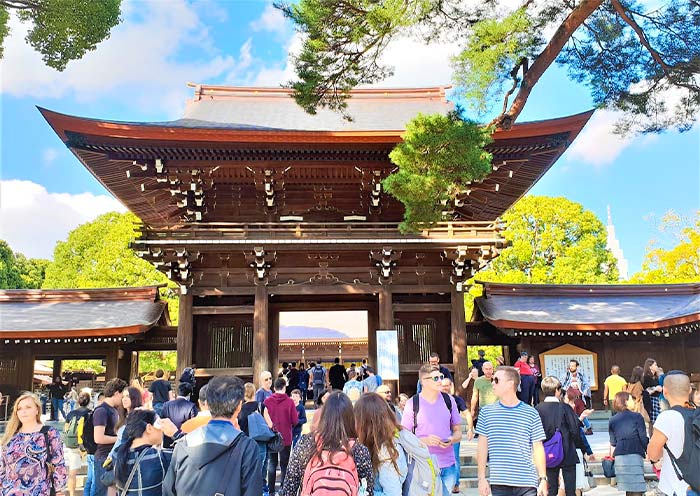
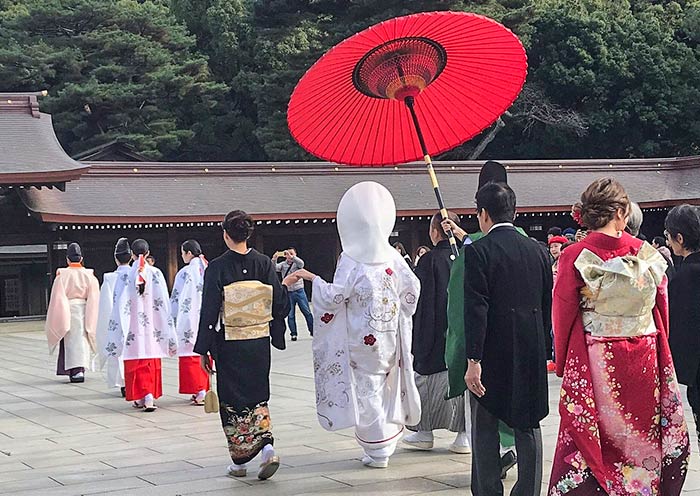
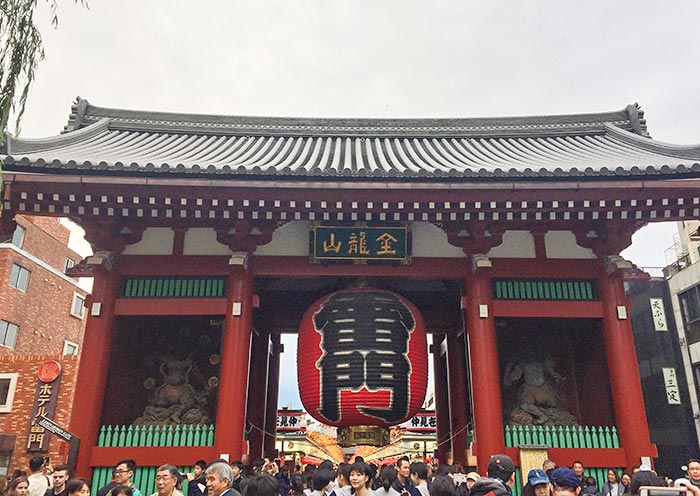
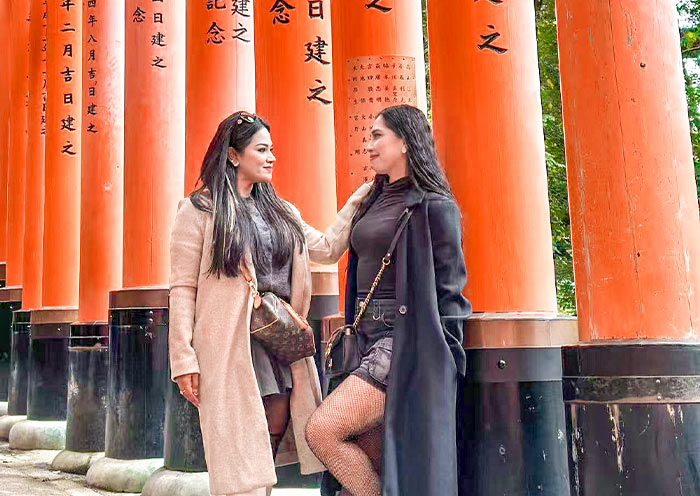
Attractions
4 Sites
Transportation
Vehicle
Dining
Breakfast
Accommodation
4-star hotel in Tokyo
On this day, your driver in Tokyo will take you to the train station, where your group will board the Shinkansen (bullet train) to Kyoto. Shinkansen Ride Experience: At Tokyo Station, board the Shinkansen bound for Kyoto Station (about 2.5 hours). This fast and comfortable journey offers an opportunity to enjoy the changing landscapes of urban and rural Japan.
Kyoto, located in the Kansai region of the country, was once the capital of Japan. It epitomizes ancient Japan and is famous for tranquil temples, exquisite gardens, colorful shrines, grand imperial palaces, and ornate castles. Boasting 17 UNESCO World Heritage sites, over 1,000 Buddhist temples, and more than 400 Shinto shrines, Kyoto is among the world's most culturally rich cities. It's also known for traditional Japanese arts and practices, such as tea ceremonies, kaiseki dining (a traditional multi-course meal), and ikebana (flower arranging). It remains one of the best places to see geishas, who are traditional Japanese female entertainers known for their refined skills in arts, music, dance, and conversation.
Upon arrival in Kyoto, the local guide and driver will be waiting in the designated area to greet you and escort you for today’s sightseeing in Kyoto.
In this afternoon, your group will visit one of Kyoto's most iconic sights, Kinkakuji Temple (Golden Pavilion) - a UNESCO World Heritage site. This Zen Buddhist temple is famous for its stunning golden exterior. The temple's stunning visual appeal comes from its top two floors, which are completely covered in gold leaf. The reflection of the golden structure shimmering in the pond in front of it, makes it perfect for photos and quiet reflection. It was originally built in 1397 as a retirement villa for Shogun Ashikaga Yoshimitsu. After Yoshimitsu's death, as per his will, the villa was converted into a Zen temple by his son.
Next, head to Nijo Castle, another UNESCO World Heritage site, to delve deeper into Japan’s feudal history. Constructed in 1603 as the Kyoto residence of Tokugawa Ieyasu, the first shogun of the Edo period, its expansive grounds and ornate architecture highlight the power and wealth of the dominant samurai clans during the Edo period (1603-1867).
The castle features two concentric rings of fortifications, each consisting of a wall and a wide moat. After passing through the grand Kara-mon (gate), you will enter Ninomaru Palace, which is divided into five buildings with numerous chambers. The interiors are adorned with masterful paintings by the Kano school, reflecting the cultural and artistic heritage of the era. The castle is renowned for its "nightingale floors," (that sing and squeak at every move, making it difficult for intruders to move about quietly), designed as a security measure against intruders. Don’t miss the excellent Ninomaru Palace Garden, which was designed by the tea master and landscape architect, Kobori Enshu.
After the tour, you will be escorted to your 4-star hotel in Kyoto. Have a good rest!
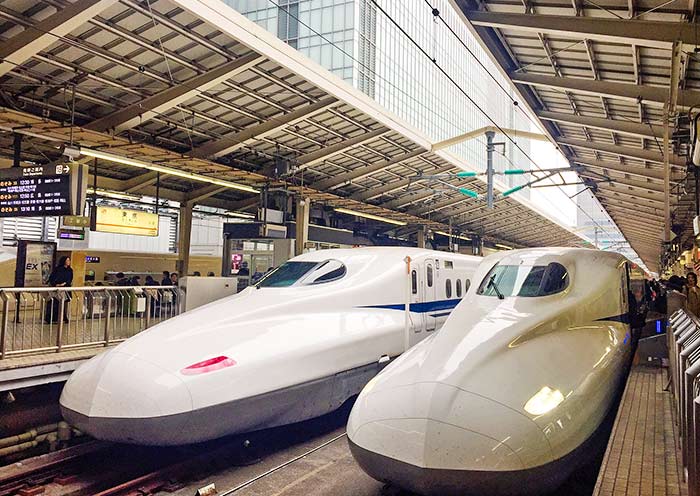
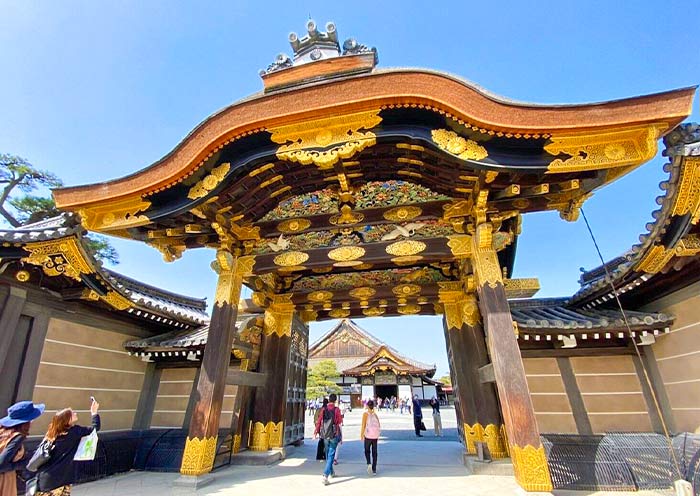
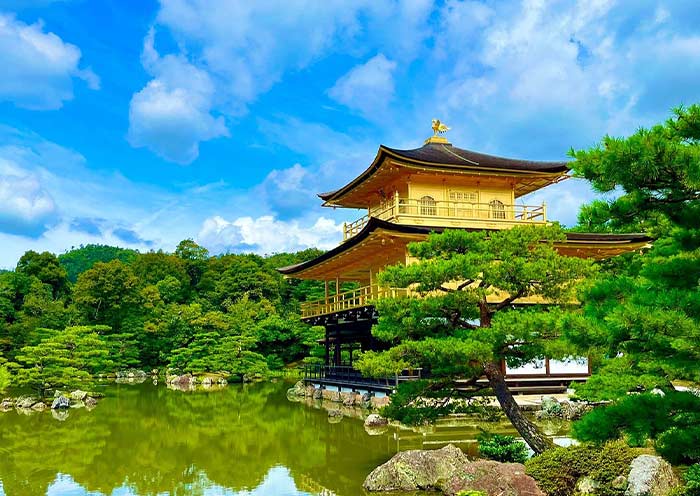
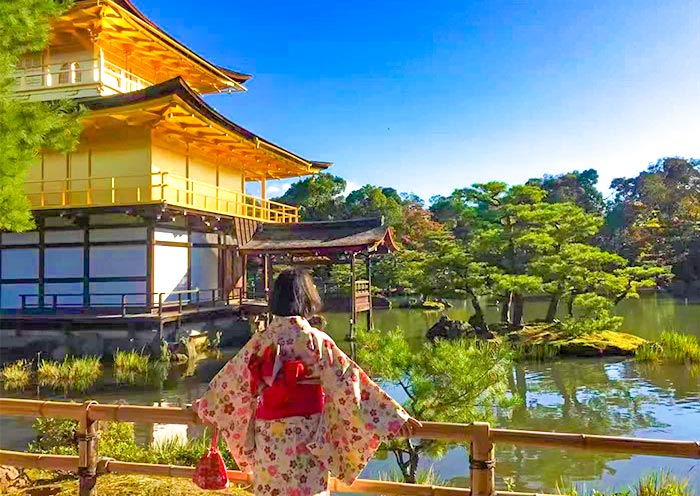
Attractions
2 Sites
Transportation
Shinkansen, Vehicle
Dining
Breakfast
Accommodation
4-star hotel in Kyoto
Kyoto, once the capital of Japan, epitomizes ancient Japan. Boasting 17 UNESCO World Heritage sites, over 1,000 Buddhist temples, and more than 400 Shinto shrines, Kyoto is among the world's most culturally rich cities. Known for traditional arts like tea ceremonies, kaiseki dining, and ikebana (flower arranging), Kyoto is also one of the best places to observe geishas.
After breakfast, your group will explore Kyoto for a full day. Start the morning in Kyoto bright and early at one of its most iconic sites - the Fushimi Inari Taisha Shrine, to beat the crowds.
Fushimi Inari Taisha Shrine is famous for its thousands of vermilion torii gates, known as Senbon Torii (“thousands of torii gates”). Layers upon layers of vermilion torii gates line the lush, wooded hillside, forming a seemingly endless corridor. The vibrant orange and black gates contrast beautifully with the surrounding greenery, creating a visually stunning and almost otherworldly path that is highly photogenic.
Fushimi Inari Taisha was founded in the early 8th century (711 AD) and is primarily dedicated to Inari, the Shinto god of rice, fertility, sake, agriculture, and industry. As you explore the shrine, you will encounter hundreds of fox statues. Said to be the messengers of the god Inari, who is associated with cereal grains, these fox statues often symbolize the deity. Many of these fox statues are depicted holding a key in their mouths, which is said to open the granary.
Tips: Hiking to the summit of the mountain and back will take two to three hours, but many people go only as far as the Yotsutsuji intersection because there are fewer torii gates beyond this point. It will take 30 to 40 minutes to reach Yotsutsuji.
Next, visit Kiyomizudera Temple, a UNESCO World Heritage Site. Perched on the hillside of Eastern Kyoto, this temple is renowned for its wooden stage that juts out over the hill, providing stunning views of the city and the surrounding nature. The temple's main hall, constructed entirely without the use of nails, is an architectural marvel. Kiyomizu-dera is also celebrated for its sacred waters, which are believed to have wish-granting powers that draw countless visitors who come to drink from its stream. Don’t miss the Hondo (Main Hall), Jishu Shrine, the Otowa Waterfall, and the spiritual experience of the Tainai-Meguri room.
Tips: The scenery at Kiyomizu-dera Temple is distinctively beautiful in each season, offering a unique charm year-round. In spring, the mountains are adorned with charming cherry blossoms; in summer, they are lush with vibrant greenery; in autumn, they are decorated with brilliantly colored leaves; and in winter, they are filled with enchanting trees.
Then, walk up the well-preserved streets of Ninenzaka and Sannenzaka. These charming, sloping streets are lined with traditional shops and quaint tea houses, offering a nostalgic glimpse into Kyoto's past. As you stroll through these areas, you can shop for unique crafts, sample local snacks, and perhaps stop at a café to relax and soak in the atmosphere of old Kyoto.
Continue to Yasaka Shrine, the guardian shrine of the Gion entertainment district, which dates back over 1350 years. Yasaka Shrine is particularly favored by those seeking beauty and wealth. Visiting this significant Shinto shrine in Kyoto, you may also find yourself gaining some good luck. The shrine is most famous for its Gion Matsuri in July, during which you can witness the procession where the deities of Yasaka are paraded through the city streets.
Adjacent to the shrine, Gion is Kyoto's famous geisha district. Here, you might catch a glimpse of Geisha (Geiko) in their elaborate kimonos and traditional makeup. As you wander through the cobblestone streets of Gion, take a moment to appreciate the beautifully preserved machiya (wooden townhouses), ochaya (teahouses), and exclusive ryotei (traditional Japanese restaurants). Gion is particularly enchanting at dusk when the lanterns are lit and geishas and maiko (apprentice geishas) make their way to evening appointments, making the narrow lanes come alive.
After the tour, your group will be escorted back to your hotel.
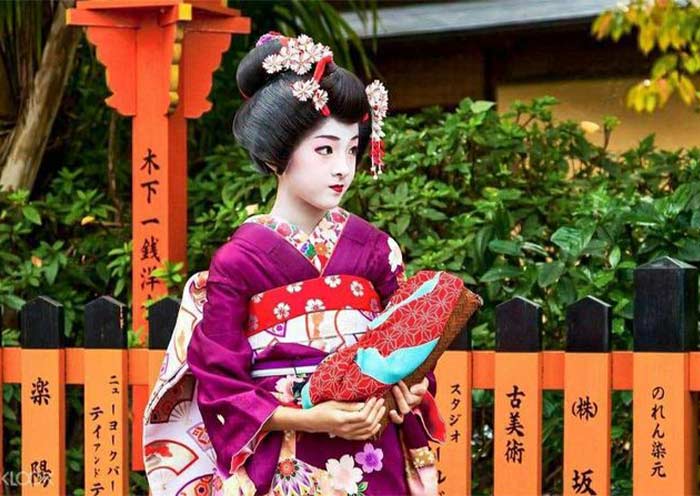

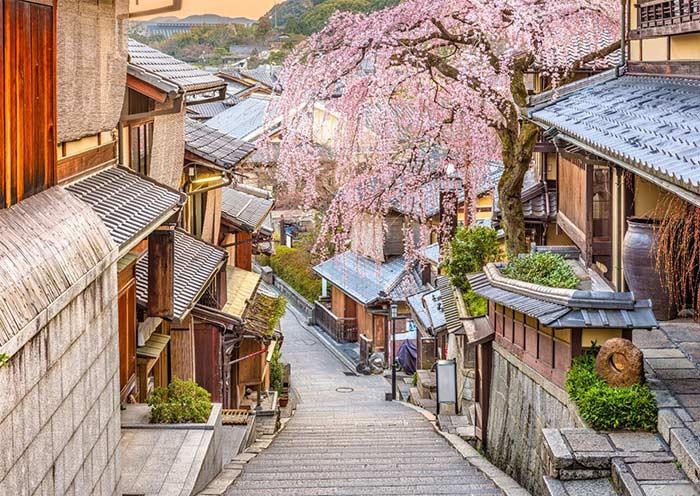
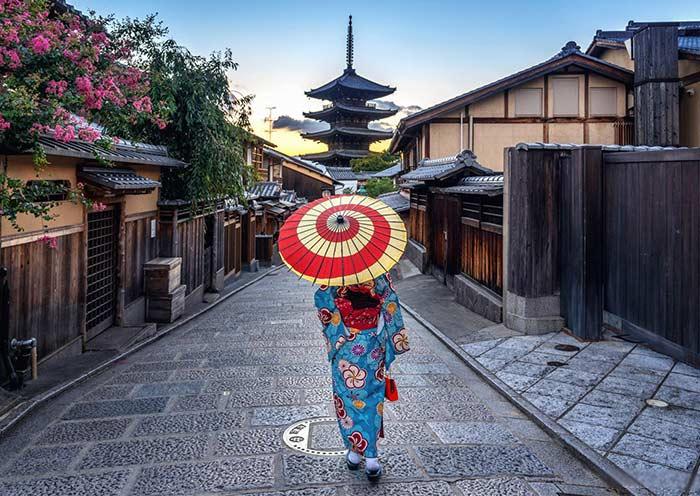
Attractions
6 Sites
Transportation
Vehicle
Dining
Breakfast
Accommodation
4-star hotel in Kyoto
In this morning, your group will depart from Kyoto and head to Nara, an approximately 1.5-hour car ride. Before Kyoto, there was Nara, Japan’s first permanent capital and one of the country’s most rewarding destinations. Nara boasts 8 World Cultural Heritage sites, making it Japan's second most culturally rich city after Kyoto.
Visit Todaiji Temple, one of Japan's most historically significant temples and a UNESCO World Heritage site. It is known for housing the world’s largest bronze statue of the Buddha Vairocana, which stands just over 16m high and consists of 437 tonnes of bronze and 130kg of gold. It represents Vairocana Buddha and is flanked by two Bodhisattvas. Todaiji's main hall, Daibutsu-den (Big Buddha Hall), is one of the world’ 's largest all-wood buildings, even though the present reconstruction of 1692 is only two-thirds of the original temple hall's size.
Walk to Nara Park, adjacent to Kasuga Taisha. This park is famous for its hundreds of freely roaming deer, considered messengers of the gods in Shinto tradition. Purchase some shika senbei (deer crackers) to feed the deer as you stroll through the park.
Head to Kasuga Taisha (Kasuga Grand Shrine), Nara’s most celebrated Shinto shrine, another UNESCO World Heritage Site. It is renowned for its lanterns, which have been donated by worshippers. Hundreds of bronze lanterns can be seen hanging from the buildings, while thousands of stone lanterns line its approach and the surrounding woods. These lanterns are lit twice a year during the Lantern Festivals in February and August, creating an ethereal and mesmerizing atmosphere.
After the tour, drive to Osaka (typically takes around 45 minutes to an hour). Osaka, Japan's third-largest city and a major economic hub, is renowned for its rich history, diverse cuisine, distinctive culture, and robust economic strength. The city's unique sense of humor and open personality make it an exceptionally interesting place, more colorful than most cities. Acres of concrete are covered with dazzling neon lights and brightly colored storefronts. Osaka is a city that loves to eat, known as the "nation's kitchen", boasting a wide variety of culinary delights.
In this afternoon, visit Osaka Castle Park, one of Japan’s most famous landmarks and a symbol of Osaka’s historical grandeur. Originally built in 1583 by Toyotomi Hideyoshi, a powerful daimyo who aimed to unify Japan, it was the largest castle of its time. After multiple renovations and reconstructions, today's Osaka Castle has been transformed into an open park, covering a total area of 105.6 hectares, making it a must-visit attraction.
Walking into the scenic area of Osaka Castle, you'll be amazed by the massive scale and precision of the moats, gates, and stone walls. The largest stone slab is 11 meters wide, and many stones are inscribed with the crests of the 64 daimyō (feudal lords) tasked with the castle’s construction back in 1620. Overlook the Main Tower (Tenshukaku) of Osaka Castle, which stands tall against the sky at the center of the extensive castle grounds. Take some time to stroll through the Nishinomaru Garden, which offers a picturesque setting with over 600 cherry trees and beautiful views of the castle tower from below. This is especially enchanting during the cherry blossom season, which usually occurs in late March and/or early April.
Last, enjoy shopping at Shinsaibashi-suji Shopping Street, Osaka's busiest shopping arcade. Then, head to the lively district of Dotonbori, where waterways are lined with luminous advertisements and signs. It's especially glitzy during the holiday season, with decorations strung across the bridges. Full of fantastic restaurants, clubs, and karaoke bars, it's the city's go-to area for entertainment. Take a photo at the iconic Glico Man sign. Try takoyaki, ball-shaped octopus bites, kushikatsu (Japanese deep-fried skewered meat and vegetables), and okonomiyaki, a savory Japanese pancake topped with whatever you like.
Free Time Ideas: visit Shinsekai (New World), an old neighborhood known for its nostalgic atmosphere reminiscent of the Showa era. Tsutenkaku Tower is the iconic landmark of this district. It was inspired by cities like Paris and New York. From a modern perspective, this 100-meter-tall steel tower may not seem particularly high, yet it holds a significant place in local history as a symbol of progress and innovation. Visiting Shinsekai is like stepping back in time, offering both the charm of yesteryears and the excitement of modern urban culture.
After the tour, your group will be escorted to the 4 star hotel in Osaka.
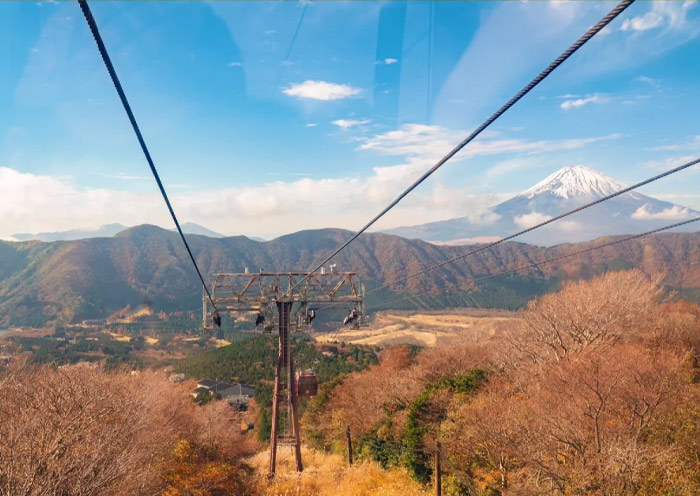
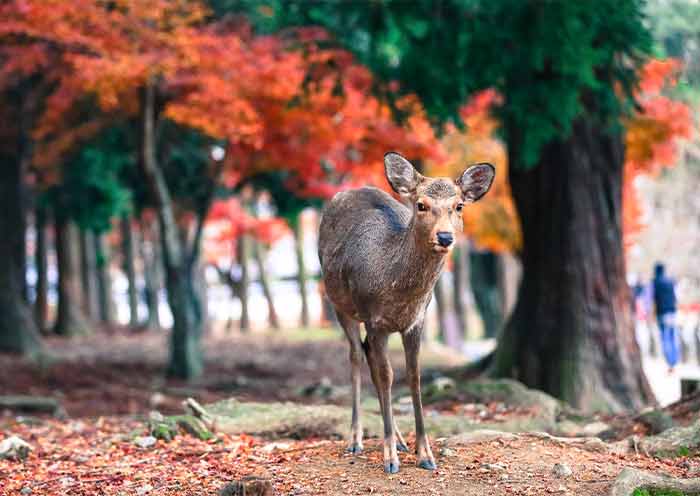
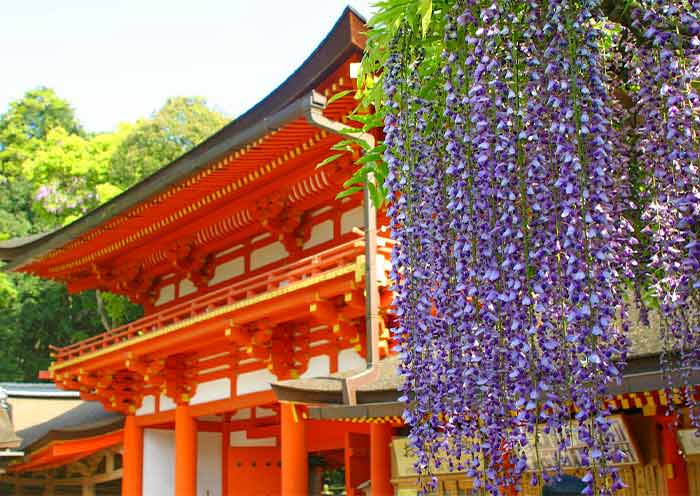
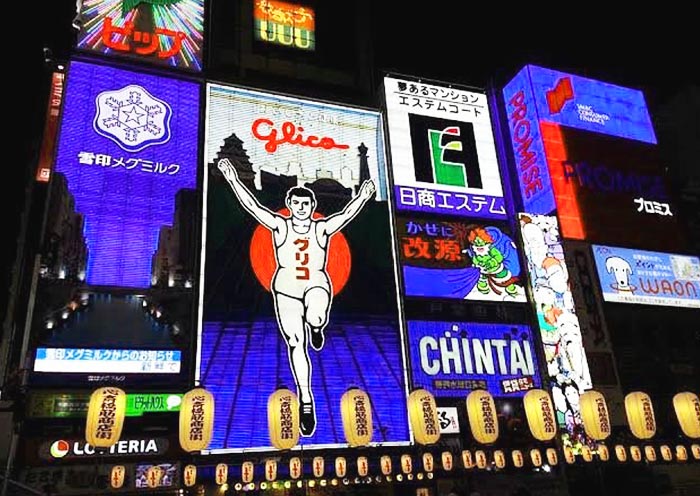
Attractions
5 Sites
Transportation
Vehicle
Dining
Breakfast
Accommodation
4-star hotel in Osaka
After breakfast, it’s time to say goodbye to Osaka, as your 7-day Japan group tour comes to an end. Today, you will need to head to the airport on your own, depending on your flight schedule. Kansai International Airport (KIX) in Osaka is available for your departure flight.
Tip: If you would like a private transfer from your hotel to the airport with Asia Odyssey Travel, please contact our travel experts in advance. We can arrange it for you.
Thank you for choosing Asia Odyssey Travel for your Japan tour. We are dedicated to enhancing your travel experience and look forward to welcoming you on your next adventure in Asia. Have a safe journey home!
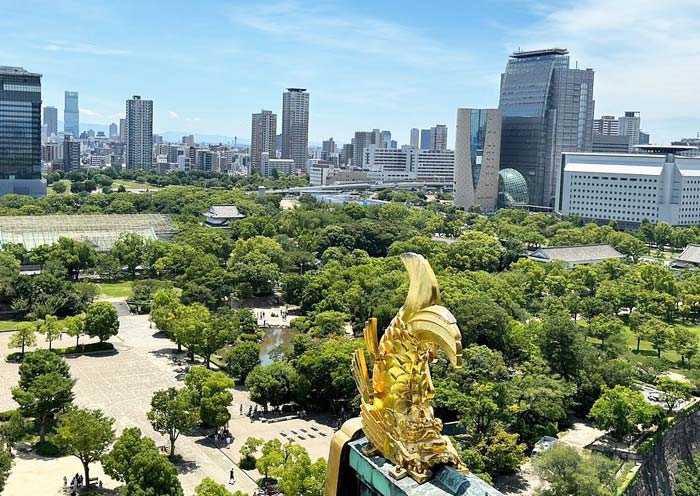
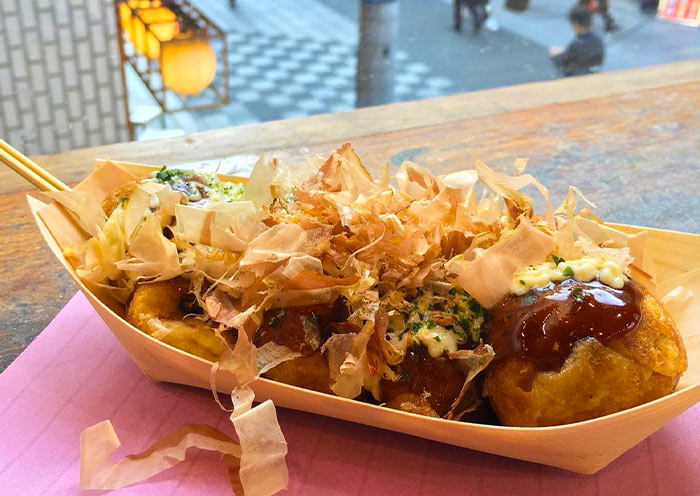
Attractions
/
Transportation
/
Dining
Breakfast
Accommodation
/
Choose Your Travel Date and Get Free Enquiry
| Month | Available Date | Price | Book The Tour |
|---|---|---|---|
| Jun | Jun.22, 2025 | from $1943 | Free Enquiry |
| Jul | Jul.06, 2025 | from $1943 | Free Enquiry |
| Jul.20, 2025 | from $2088 | Free Enquiry | |
| Jul.27, 2025 | from $2088 | Free Enquiry | |
| Aug | Aug.03, 2025 | from $2088 | Free Enquiry |
| Aug.17, 2025 | from $2088 | Free Enquiry | |
| Aug.24, 2025 | from $1943 | Free Enquiry | |
| Sep | Sep.07, 2025 | from $1943 | Free Enquiry |
| Sep.14, 2025 | from $1943 | Free Enquiry | |
| Sep.21, 2025 | from $1943 | Free Enquiry | |
| Oct | Oct.12, 2025 | from $1943 | Free Enquiry |
| Oct.19, 2025 | from $1943 | Free Enquiry | |
| Oct.26, 2025 | from $1943 | Free Enquiry | |
| Nov | Nov.09, 2025 | from $1943 | Free Enquiry |
| Nov.16, 2025 | from $1943 | Free Enquiry | |
| Nov.23, 2025 | from $1943 | Free Enquiry | |
| Dec | Dec.07, 2025 | from $1943 | Free Enquiry |
| Dec.14, 2025 | from $1943 | Free Enquiry | |
| Dec.21, 2025 | from $2088 | Free Enquiry | |
| Jan | Jan.11, 2026 | from $1943 | Free Enquiry |
| Jan.25, 2026 | from $1943 | Free Enquiry | |
| Feb | Feb.08, 2026 | from $1943 | Free Enquiry |
| Feb.22, 2026 | from $2088 | Free Enquiry | |
| Mar | Mar.01, 2026 | from $1943 | Free Enquiry |
| May | May.10, 2026 | from $1943 | Free Enquiry |
| May.17, 2026 | from $1943 | Free Enquiry | |
| May.24, 2026 | from $1943 | Free Enquiry | |
| Jun | Jun.07, 2026 | from $1943 | Free Enquiry |
| Jun.14, 2026 | from $1943 | Free Enquiry | |
| Jun.21, 2026 | from $1943 | Free Enquiry | |
| Jul | Jul.05, 2026 | from $1943 | Free Enquiry |
| Jul.12, 2026 | from $2088 | Free Enquiry | |
| Jul.19, 2026 | from $2088 | Free Enquiry | |
| Aug | Aug.09, 2026 | from $2088 | Free Enquiry |
| Aug.16, 2026 | from $2088 | Free Enquiry | |
| Aug.23, 2026 | from $1943 | Free Enquiry | |
| Sep | Sep.06, 2026 | from $1943 | Free Enquiry |
| Sep.13, 2026 | from $1943 | Free Enquiry | |
| Sep.20, 2026 | from $2088 | Free Enquiry | |
| Oct | Oct.11, 2026 | from $1943 | Free Enquiry |
| Oct.18, 2026 | from $1943 | Free Enquiry | |
| Oct.25, 2026 | from $1943 | Free Enquiry | |
| Nov | Nov.08, 2026 | from $1943 | Free Enquiry |
| Nov.15, 2026 | from $1943 | Free Enquiry | |
| Nov.22, 2026 | from $1943 | Free Enquiry | |
| Dec | Dec.06, 2026 | from $1943 | Free Enquiry |
| Dec.13, 2026 | from $1943 | Free Enquiry | |
| Dec.20, 2026 | from $2088 | Free Enquiry |
Price: What’s Included & What’s Excluded
What’s Included:
What’s Excluded:
- 01 Our Japan small group tours typically include 1–16 travelers, giving you the opportunity to meet and explore with people from around the world. To ensure comfort, the group size will not exceed 16 travelers.
- 02 Solo travelers are welcome! We accept individual bookings, and only one traveler can book per reservation. Simply confirm your departure with our Japan travel experts.
- 03 The tour price is based on double occupancy, with two travelers sharing a room. Solo travelers or those requesting a single room for personal reasons will need to pay an additional single supplement fee.
- 04 A deposit is required at the time of booking to secure your place on the tour. The remaining balance is due no later than 30 days prior to the departure date.
-
05
Cancellation and Rescheduling Policy for AOT-JPN-A, B, C, and D:
30 to 60 days before departure: 10% of the tour fee.
15 to 29 days before departure: 30% of the tour fee.
8 to 14 days before departure: 80% of the tour fee.
0 to 7 days before departure: 100% of the tour fee.
-
06
Cancellation and Rescheduling Policy for AOT-JPN-E (Cherry Blossom Tour):
31 to 60 days before departure: 30% of the tour fee.
16 to 30 days before departure: 80% of the tour fee.
0 to 15 days before departure: 100% of the tour fee.
- 07 Child Pricing Policy (For children 12 years old and under): If a child requires a separate bed, the price will be the same as the adult rate. If you are traveling with children, please contact us in advance.
-
08
Luggage Policy (Excess luggage may affect passenger comfort):
Each traveler is allowed 1 suitcase (maximum 26 inches) and 1 carry-on backpack. - 09 Participants are strongly advised to purchase comprehensive travel insurance covering medical expenses, personal accident, cancellation, and personal property.
- 10 Please note that any non-participation in the itinerary will be considered as voluntary abandonment, and no refund will be provided for those activities or locations.
- 11 Any changes to the booking after confirmation may incur amendment fees, subject to availability and any additional costs imposed by suppliers.
- 12 For the safety and convenience of all travelers, it is not possible to accommodate requests to deviate from the tour itinerary during the trip.
Hotel Conditions for Japan Group Tours
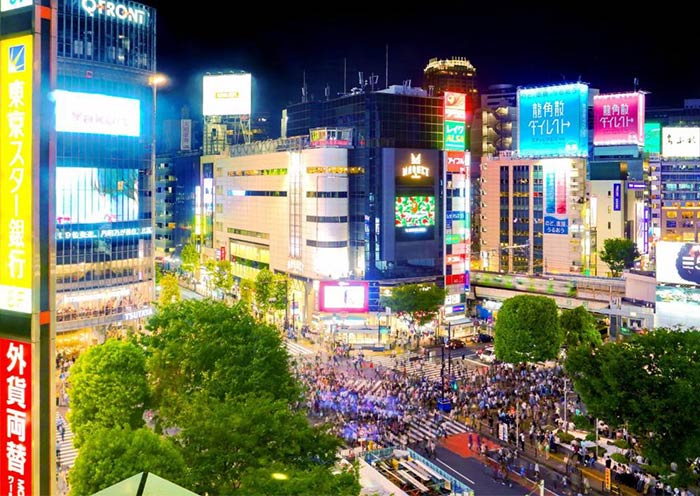

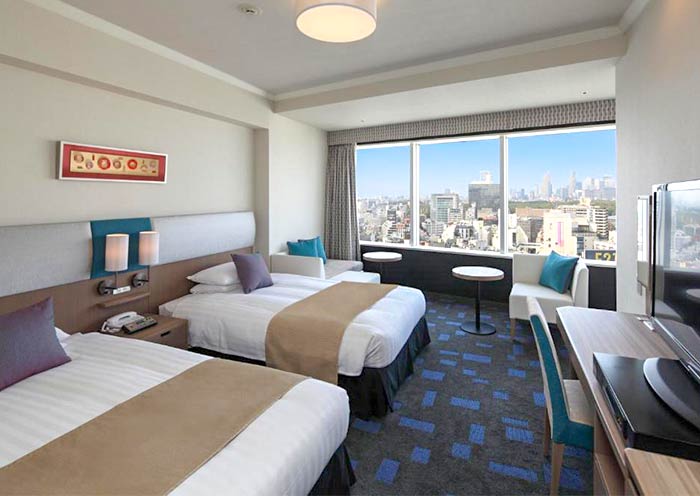
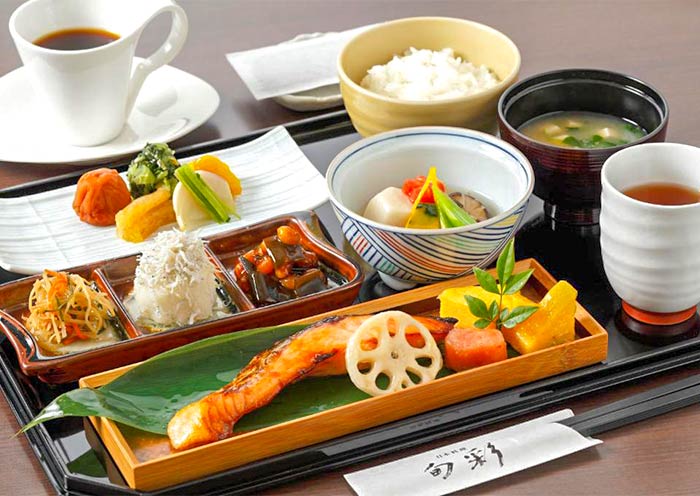
Exciting News About Accommodation for Our Japan Group Tours! Enjoy a comfortable stay throughout your journey! We carefully select 4-star hotels in each destination, including Tokyo, Kyoto, and Osaka, ensuring a high-quality experience.
Accommodation Options: Each city offers multiple 4-star hotel choices. Final hotel selection is based on availability and pricing for your specific tour dates. Please note: specific hotel requests cannot be accommodated for group tours. Hotel details will be confirmed three days before your tour begins.
Hotel Amenities & Facilities: All selected hotels are clean, safe, and conveniently located. You can expect excellent service throughout your stay.
Room Allocation: Standard accommodations are based on twin-sharing. Solo travelers may be paired with a same-gender roommate or have the option to pay a single supplement for private accommodation at an additional cost.
Twin & Double Bed Requests: Twin rooms are the default arrangement. Guests may request a double bed, but availability cannot be guaranteed.
Latest Japan Group Tours Reviews from Our Customers

Sam Lin
Singapore
Our 8 days group tour in December was amazing! Tokyo’s vibrant streets and Mount Fuji’s snow-capped beauty were breathtaking. Kyoto’s temples and Nara’s deer park offered a serene charm, while Osaka dazzled with its food and nightlife. Hiroshima’s Peace Memorial Park was deeply moving. The crisp winter atmosphere and festive illuminations added a magical touch. Traveling with a small group made the experience fun, seamless, and unforgettable!
Date of Experience: Dec 24, 2024
Tour Customized by: Vincent
You May be Interested in This Tour: 8 Days Best Japan Group Tour: Japan Highlights & Hiroshima

Zhang Xin Hua
Malaysia
Visiting Japan’s Golden Route in October was incredible! From Tokyo's vibrant city life to the serene beauty of Mount Fuji, every stop was unforgettable. Kyoto’s temples and Nara’s friendly deer captured Japan’s charm, while Osaka’s food scene was a delight. The mix of tradition and modernity made it a perfect 7-day journey!
Date of Experience: Oct 26, 2024
Tour Customized by: Allan
You May be Interested in This Tour: 7 Days Japan Golden Route Tour in Small Group

Dan Z
Washington DC
Date of Experience: Aug 24, 2024
Tour Customized by: Rex
You May be Interested in This Tour: 7 Days Japan Kansai Tour with Hiroshima: Osaka, Kyoto, Uji & Nara
